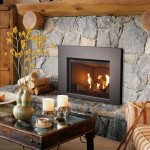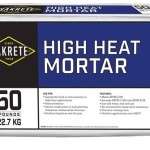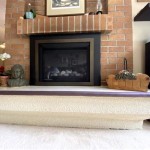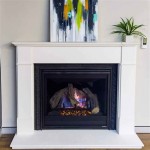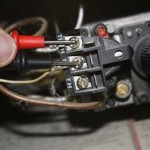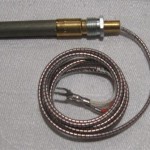Gas Fireboxes For Fireplaces: A Comprehensive Overview
Gas fireboxes represent a modern and efficient solution for homeowners seeking the ambiance of a traditional fireplace without the complexities associated with wood-burning appliances. These self-contained units are designed to house a gas fire, providing controlled heat output and enhanced safety features. This article will delve into the characteristics, benefits, installation considerations, and maintenance requirements of gas fireboxes for fireplaces.
A gas firebox fundamentally comprises a steel or cast iron enclosure that contains the gas burner, simulated logs, and venting system connections. These units are typically designed for installation within existing fireplace openings or as part of new construction projects. The design of the unit is crucial for effective heat distribution and safe operation, ensuring that combustion byproducts are properly vented to the outside environment.
Key Point 1: Types of Gas Fireboxes
Gas fireboxes can be broadly categorized based on their venting system. This distinction is critical as it determines the installation requirements and overall efficiency of the unit. The primary types are direct vent, B-vent (natural vent), and vent-free fireboxes.
Direct Vent Fireboxes: These systems are considered the most efficient and safest option. They draw combustion air from outside the building and exhaust the combustion products directly to the outside through a sealed venting system. This prevents the depletion of indoor air and minimizes the risk of carbon monoxide poisoning. Direct vent systems can be vented horizontally or vertically, offering greater flexibility in installation location. The sealed combustion chamber also contributes to increased heating efficiency.
B-Vent (Natural Vent) Fireboxes: Also known as natural vent fireboxes, these rely on natural draft to vent combustion gases. They require connection to a vertical chimney or vent that is designed to safely expel the exhaust. B-vent systems utilize indoor air for combustion, which can potentially lead to lower heating efficiency compared to direct vent systems. They are generally less expensive to install than direct vent options, but may be subject to stricter building codes and inspection requirements.
Vent-Free Fireboxes: These units are designed to operate without an external venting system. They utilize advanced burner technology to achieve virtually complete combustion, minimizing the production of harmful emissions. While vent-free fireboxes offer installation flexibility, they are subject to stringent regulations and may not be permitted in all jurisdictions. It is imperative to check local building codes and manufacturer specifications before considering a vent-free option. Furthermore, they require the use of an oxygen depletion sensor (ODS) to shut off the gas supply if oxygen levels in the room drop to unsafe levels.
Key Point 2: Benefits of Using Gas Fireboxes
Gas fireboxes offer several advantages over traditional wood-burning fireplaces, making them a popular choice for many homeowners. These benefits include convenience, efficiency, and environmental considerations.
Convenience: A significant advantage of gas fireboxes is their ease of use. They can be ignited with the flip of a switch or the push of a button, eliminating the need to gather, store, and handle firewood. This convenience is particularly appealing to individuals with mobility issues or those who simply prefer a hassle-free heating option. Many models also come equipped with thermostats and remote controls, allowing for precise temperature management.
Efficiency: Compared to traditional wood-burning fireplaces, gas fireboxes generally offer higher heating efficiency. Direct vent models, in particular, are designed to maximize heat output and minimize heat loss through the venting system. This results in lower energy bills and reduced fuel consumption. The controlled combustion process also ensures a more consistent and predictable heat output.
Environmental Considerations: Gas fireboxes produce fewer emissions than wood-burning fireplaces, contributing to improved air quality. The combustion process is cleaner and more efficient, reducing the release of particulate matter and other harmful pollutants into the atmosphere. This is particularly important in areas with air quality concerns or regulations restricting wood-burning appliances. Using propane or natural gas as a fuel source is often considered a more environmentally responsible alternative to wood combustion.
Key Point 3: Installation and Maintenance Requirements
Proper installation and regular maintenance are essential for ensuring the safe and efficient operation of a gas firebox. These tasks should be performed by qualified professionals to minimize the risk of malfunction or safety hazards.
Installation: Gas firebox installation requires careful attention to detail and adherence to local building codes. It is crucial to ensure that the unit is properly connected to the gas supply and venting system. A licensed gas fitter should perform the gas line connection to ensure it meets all safety standards. The venting system must be installed according to the manufacturer's specifications to prevent carbon monoxide leaks. Furthermore, proper clearances must be maintained between the firebox and combustible materials to prevent fire hazards.
Maintenance: Regular maintenance is essential for prolonging the lifespan of the firebox and ensuring optimal performance. This includes inspecting the venting system for obstructions, cleaning the burner and logs, and checking the gas line connections for leaks. It is important to schedule annual inspections by a qualified technician to identify and address any potential issues before they escalate into more serious problems. The pilot light should be checked regularly to ensure it is functioning correctly. Furthermore, following the manufacturer's recommendations for cleaning and maintenance is crucial.
In conclusion, Gas fireboxes represent a versatile and efficient heating solution for modern homes, offering a combination of convenience, efficiency, and environmental benefits. Understanding the different types, advantages, and necessary maintenance is critical for making an informed decision and ensuring the safe and effective operation of the appliance.
:max_bytes(150000):strip_icc()/ventless-gas-fireplaces-4160746-hero-f9d4bdcd9bd446eb84406de306f790ba.jpg?strip=all)
How To Pick Out A Ventless Gas Fireplace

12 Types Of Gas Fireplaces You Need To Know

How Much Does A Gas Fireplace Insert Cost Forbes Home

Enviro S Gas G42 Fireplace

Zero Clearance Fireplaces Valor Gas

Gas Fireplaces Fireplace Xtrordinair Made In America

Chimney Pro Everything You Need To Know About Gas Fireplaces

Empire Rose Outdoor Premium Gas Fireboxes Milliviolt Starwood Fireplaces

Do Gas Fireplaces Need A Chimney Dreifuss

All About Gas Fireplace Inserts Advice We Love Fire
Related Posts

